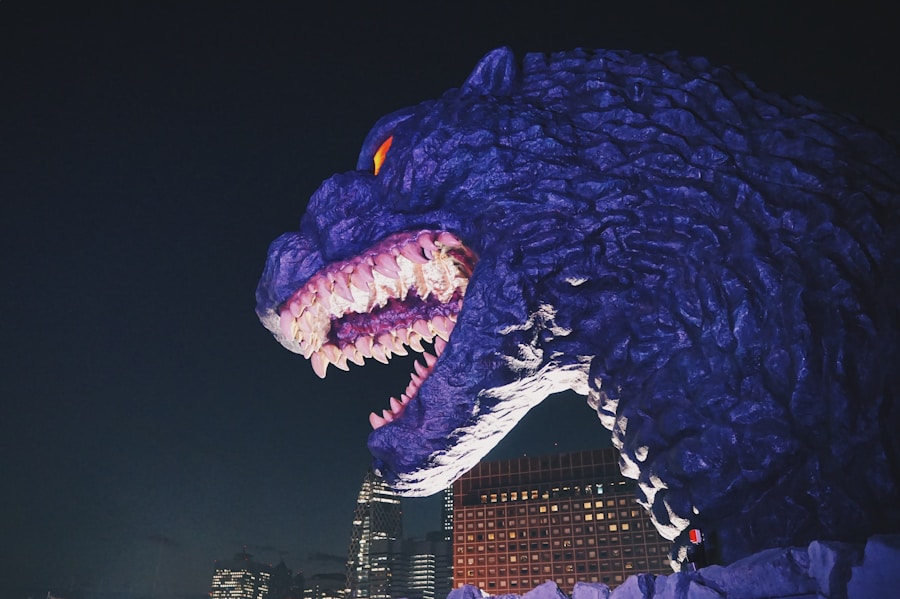As you delve into the 1970s, you’ll find a decade marked by a burgeoning awareness of environmental issues. This era was pivotal in shaping public consciousness around ecological concerns, driven by a series of events that highlighted the fragility of the planet. The first Earth Day in 1970 served as a rallying point for millions, igniting a movement that called for greater respect for nature and a reevaluation of humanity’s relationship with the environment.
You can see how this awakening was not just a fleeting trend; it was a profound shift in societal values, as people began to recognize the impact of pollution, deforestation, and industrialization on the Earth’s ecosystems. The publication of Rachel Carson’s “Silent Spring” in 1962 had already laid the groundwork for this movement, but it was in the 1970s that her warnings truly resonated with the public. You might recall how images of smog-filled cities and polluted rivers became emblematic of a world in crisis.
Activism surged, with grassroots organizations forming to combat environmental degradation. The establishment of the Environmental Protection Agency (EPA) in the United States further underscored the seriousness with which governments began to approach these issues. As you reflect on this period, it becomes clear that eco-consciousness was not merely an intellectual exercise; it was a call to action that would influence various aspects of culture, including film.
Key Takeaways
- The 1970s saw a rise in eco-consciousness, with a growing awareness of environmental issues and a push for conservation efforts.
- Kaiju films emerged as a popular genre in the 1970s, featuring giant monsters wreaking havoc on cities and landscapes.
- Environmental concerns had a significant influence on the themes and narratives of kaiju films, reflecting the growing awareness of ecological issues.
- Popular kaiju films of the 1970s included “Godzilla vs. Hedorah” and “Gamera vs. Zigra,” which highlighted environmental themes and the consequences of human actions on nature.
- Kaiju films served as a reflection of societal concerns, addressing environmental destruction, pollution, and the impact of human activities on the planet.
The Emergence of Kaiju Films in the 1970s
In parallel with the rise of eco-consciousness, the 1970s also witnessed the emergence of kaiju films, a genre that would capture the imagination of audiences worldwide. Originating from Japan, kaiju films featured giant monsters wreaking havoc on cities, often serving as metaphors for larger societal fears. You can trace the roots of this genre back to earlier films like “Godzilla,” but it was during this decade that kaiju truly evolved into a cultural phenomenon.
The genre’s unique blend of science fiction and horror allowed filmmakers to explore themes that resonated deeply with contemporary audiences. As you explore this cinematic landscape, you’ll notice that kaiju films were not just about monsters; they were about humanity’s struggle against forces beyond its control. The visual spectacle of towering creatures battling each other or laying waste to urban landscapes captivated viewers, but it also provided a platform for deeper commentary.
The genre’s popularity surged as filmmakers began to experiment with storytelling techniques and special effects, pushing the boundaries of what was possible on screen. You can appreciate how these films became a mirror reflecting societal anxieties, particularly in a world grappling with rapid technological advancements and environmental degradation.
The Influence of Environmental Concerns on Kaiju Films

The intersection of eco-consciousness and kaiju films is particularly fascinating. As you analyze these films from the 1970s, you’ll find that many of them were infused with environmental themes that echoed the growing concerns of the time. The monsters themselves often represented nature’s wrath, unleashed as a response to humanity’s reckless exploitation of the environment.
You might recall how Godzilla, initially portrayed as a terrifying force, gradually transformed into a symbol of nature’s vengeance against pollution and nuclear testing. In films like “Godzilla vs. Hedorah,” you can see a direct correlation between environmental degradation and monstrous manifestations.
Hedorah, the Smog Monster, embodies pollution itself, serving as a stark reminder of the consequences of industrialization. This film, along with others from the era, illustrates how filmmakers used kaiju to critique contemporary society’s disregard for ecological balance. As you watch these films, you may find yourself reflecting on how they encapsulated the fears and hopes of a generation striving for change.
Popular Kaiju Films of the 1970s
| Film Title | Release Year | Director | Box Office Gross |
|---|---|---|---|
| Godzilla vs. Megalon | 1973 | Jun Fukuda | 20 million |
| War of the Gargantuas | 1966 | Ishirō Honda | 2.5 million |
| Gamera vs. Zigra | 1971 | Noriaki Yuasa | Not available |
| Ultraman Taro: The Movie | 1973 | Not available | Not available |
As you explore the popular kaiju films of the 1970s, several titles stand out as cultural touchstones that shaped the genre. “Godzilla vs. Hedorah,” released in 1971, is perhaps one of the most significant examples, as it directly addresses environmental issues while delivering thrilling monster battles.
You can appreciate how this film not only entertained but also educated audiences about pollution and its dire consequences. The striking visuals and innovative special effects made it a landmark in kaiju cinema. Another notable film is “Godzilla vs.
Megalon,” which premiered in 1973 and showcased Godzilla teaming up with Jet Jaguar to combat an underwater civilization’s monstrous creation. While it may not have carried the same environmental message as its predecessor, it still captured the imagination of audiences with its imaginative storytelling and action-packed sequences. As you watch these films, you’ll notice how they reflect both the escapism sought by viewers and the underlying societal concerns that permeated their narratives.
Kaiju Films as a Reflection of Societal Concerns
Kaiju films serve as more than just entertainment; they are cultural artifacts that reflect societal concerns and anxieties. As you analyze these films from the 1970s, you’ll see how they encapsulated fears surrounding technological advancement, war, and environmental destruction. The monsters often symbolize humanity’s hubris—an embodiment of nature’s retribution for our transgressions against it.
You might find it intriguing how these films allowed audiences to confront their fears in a safe space while simultaneously prompting discussions about responsibility and stewardship. Moreover, kaiju films often mirrored geopolitical tensions of the time. The Cold War backdrop influenced many narratives, with monsters representing not only natural disasters but also man-made threats.
As you watch these films unfold, consider how they reflect a society grappling with its identity amid rapid change and uncertainty. The monsters become metaphors for both external threats and internal struggles, allowing viewers to engage with complex issues through a fantastical lens.
The Impact of Kaiju Films on Environmental Activism

The impact of kaiju films on environmental activism cannot be overstated. As you reflect on this connection, consider how these films inspired audiences to think critically about their relationship with nature. The visual representation of monstrous consequences stemming from human actions served as a powerful motivator for change.
You might recall how scenes depicting destruction caused by kaiju resonated with viewers who were already concerned about pollution and environmental degradation. In many ways, kaiju films acted as catalysts for discussions around environmentalism. They provided a platform for activists to raise awareness about pressing issues while engaging younger generations through popular culture.
You can see how these films encouraged audiences to take action—whether through grassroots movements or personal lifestyle changes—by highlighting the urgent need for ecological preservation. As you explore this legacy, it becomes clear that kaiju cinema played an essential role in shaping public discourse around environmental issues.
Legacy of Eco-Consciousness in Kaiju Films
The legacy of eco-consciousness in kaiju films extends far beyond the 1970s; it has influenced subsequent generations of filmmakers and audiences alike. As you examine modern interpretations of kaiju narratives, you’ll find that many continue to grapple with themes of environmentalism and humanity’s impact on nature. The genre has evolved, but its core message remains relevant: our actions have consequences, and we must confront them head-on.
You might notice how contemporary kaiju films often revisit themes established in their predecessors while incorporating new scientific understandings and cultural perspectives. For instance, recent entries like “Kong: Skull Island” and “Godzilla: King of the Monsters” reflect ongoing concerns about climate change and biodiversity loss. As you engage with these films, consider how they serve as reminders that the struggle for ecological balance is ongoing—a legacy rooted in the eco-consciousness that emerged during the 1970s.
Modern Relevance of 1970s Eco-Consciousness and Kaiju Films
As you look at today’s world, the relevance of 1970s eco-consciousness and kaiju films becomes increasingly apparent. With climate change looming large and environmental crises becoming more frequent, the messages embedded within these films resonate deeply with contemporary audiences. You may find yourself reflecting on how these narratives encourage us to confront our responsibilities toward the planet while also providing an outlet for our fears about an uncertain future.
In an age where environmental activism is more critical than ever, kaiju films continue to inspire new generations to advocate for change. They remind us that while we may feel small in the face of overwhelming challenges, collective action can lead to significant transformations. As you engage with both historical and modern interpretations of kaiju cinema, consider how these stories serve as both cautionary tales and calls to action—urging us to protect our planet for future generations while celebrating the resilience of nature itself.
